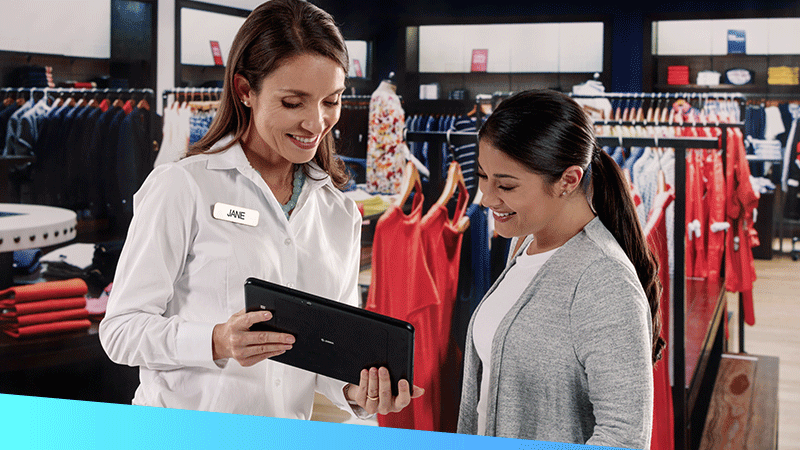
The In-Store Experience is Still In
Contrary to popular belief, brick-and-mortar retail models are not dying. In fact, competition for shelf space is increasing thanks to renewed consumer demand for physical shopping experiences.
I know this claim may be a bit shocking. For several years now, we have widely assumed that digital shopping has been cannibalizing the physical shopping model. That brick-and-mortar brands were falling victim to the “Amazon effect.” Boy, were we wrong!
Amazon may have proven that the digital retail model can be profitable, and it may have influenced the industry’s quick investment in infrastructure to facilitate speedier shipping capabilities. But consumers are calling the shots for other retailers, and consumers have made it clear that they do not want retailers to close up shop.
Zebra’s 2019 Shopper Vision Study revealed that today’s shopper still very much values brick and mortar stores despite the continued maturation and growing convenience of e-commerce. In fact, the majority of shoppers split their shopping between physical and digital stores last year, with only 43% of respondents claiming to have forgone the in-store experience completely in lieu of making purchases only online.
Retailers aren’t facing a fork in the road. Physical shopping experiences are becoming a competitive advantage once again, even in a digitally-driven “on-demand economy.”
The misperception that digital shopping would forever dominate retail led many to believe that brands were facing a “life or death” choice: either focus investments in developing your online presence or attempt to salvage your physical investments by adding more value to the in-store experience. But it was overwhelmingly evident at NRF 2019 that there is no longer a battle between the digital and physical retail realms, if there ever really was one to start. Retailers consistently reinforced they are committed to improving the customer experience equally across all channels in the hopes of creating a frictionless shopping experience.
Yes, Amazon is respected as an industry influencer and innovator. It was one of the first to use a membership program to drive customer loyalty, and it has solidified the feasibility of fast shipping. But while shipping used to be a differentiator – really a competitive advantage – for Amazon, other retailers are now offering comparable shipping options to appease customers and secure loyalty too.
In other words, shipping is only one pillar that retailers must invest in to survive the next decade.
Retailers must adjust to accommodate new shopper behaviors in-store and empower store associates to maximize in-store retail sales – even for traditionally “online-only” brands.
Though the preference for in-store shopping remains, our study found that shoppers are owning their shopping experience more than in previous years.
With the wide use of smartphones, they’re able to search for coupons, discounts, product information, price comparisons—and basically anything they can access through the internet. Shoppers that participated in our 2019 study said they consider smartphones to be an essential tool to their shopping, with most believing they’re more connected to store information than the store associates.
This gives retailers an opportunity to use their brick-and-mortar stores to their advantage and potentially increase in-store retail sales by equipping store associates with the right technology. Our study revealed that shoppers are more likely to make an in-store purchase when an associate can provide alternative options. For instance, if the desired item is currently out of stock in store, associates can offer to order and ship it directly to the shopper’s home or provide a discount for when the item is restocked.
Tools like enterprise mobile computers give store associates the capabilities to enhance customer service—capabilities like real-time inventory visibility, processing payment anywhere within the store, product information lookup, access to customer information and alternative fulfillment options.
These technologies can also enhance shoppers’ emotional buying experience, as in-store purchases are no longer just transactional. Whether shopping for clothes, makeup, groceries, a TV or a mattress, most consumers still have a desire to feel, touch, smell, taste and simply just experience a product in person before committing to a purchase.
This is one of the main reasons why physical stores remain retailers’ competitive advantage – and why eCommerce retailers are reconsidering their online-only models. For example, Casper built its entire business online. But it has started setting up beds in brick-and-mortar locations so that consumers can experience their products, really connect with them, before buying online. Other traditionally digital brands are increasing their physical presence in-store through partnerships, setting up kiosks or requesting shelf space in everything from drug stores and convenience chains to grocery and department stores to make their products available “right now” to consumers who want them. Physical stores are the definition of “on-demand” after all, as long as they are properly stocked. (This is why it’s critical that you have complete inventory visibility throughout your supply chain to improve ordering and shipping avert out-of-stocks in-store, which we’ll dig into more in the coming weeks.)
Just note: It doesn’t matter how emotionally attached a consumer may be to your brand or product, shoppers indicated in our 2019 study that they are more likely to leave and look for a more affordable option at a competing store or online when the store price for an item is too expensive. In the past, whenever shoppers needed assistance, they would typically get help from a store associate. Now that modern shoppers have smartphones and feel as though they are more connected and have more answers than store employees, retailers may be losing out on retail sales based on pricing.
The takeaway?
If you want to make customers happy, you need to take strides to create a frictionless experience throughout the entire buying journey both in-store and online. Improve the quality of goods and services offered as well as pricing, ensure product availability and then offer immediate checkout. This will prevent impatient customers from abandoning their purchase in-store and making a purchase elsewhere; somewhere they deem more convenient, such as Amazon. At the same time, streamlining the customer experience – having what they need, when they need it, at the right price – will continue to drive consumers into your physical stores versus defaulting to an online purchase or abandoning the purchase altogether.
Retail mobile technology can be the simple solution retailers require to personalize the in-store experience for customers and positively impact business for both omnichannel and (formerly) online-only brands.
To learn more about what retailers can expect in the future, read the full 2019 Shopper Vision Study.

Shawn J. Harris
Shawn currently leads go-to-market efforts for Zebra’s SmartSight, as Director of North American Sales. Leveraging Zebra’s over 50 years of experience building purpose-built solutions for retail, SmartSight is Zebra’s inaugural intelligent automation service offering for retail. In this role, Mr. Harris helps Zebra’s retail customers navigate the ever-changing retail landscape and truly digitize their store floors. He provides thought leadership, pragmatic insights and innovative solutions on issues pertaining to the implications of Intelligent Automation and Artificial Intelligence for business strategy, customer experience, inventory visibility and staff productivity.
Mr. Harris’ passion rests in brick-and-mortar and digital retail technology, operations and customer experiences. That has spilled over into supply chain management; he has a strong understanding of the complexity of the timebound matching of supply to demand.
He has been involved with store systems, ecommerce, and order management technologies for over 15 years and has served in various management and consulting roles with tier-one retailers, including TJX Cos, Staples, BJ’s, O’Reilly Auto Parts, and Uniqlo (Fast Retailing). Mr. Harris also founded a luxury menswear brand, which most was known for designing and manufacturing clothing for some of New England’s most regarded corporate executives and professional athletes across the country.
Mr. Harris keeps a keen eye on what’s potentially next, by staying closely involved in the Boston, New York, and Silicon Valley startup communities. He recently served as the program lead for the Startup Leadership Program and has participated in startup programs through XRC Labs, Techstars, MassChallenge and New York Fashion Tech Lab.
Before his career in retail, Mr. Harris helped to start e4eNet as the vice president of global operations. e4eNet was a cloud-based enterprise platform that handled the design for manufacturing process for printed circuit boards (PCBs), e4eNet was ultimately sold to IBM. Prior to e4Enet, Mr. Harris worked for IBM in a number of technical capacities and honorably served in the Army National Guard as an infantryman and armored personnel carrier (APC) driver for eight years. He has a deep curiosity for culture and language. He speaks conversational Japanese, and he has traveled to numerous countries in Europe, Africa, and Asia for business. Mr. Harris earned his MBA from Babson College and a bachelor's degree in management information systems from the University of Massachusetts.






